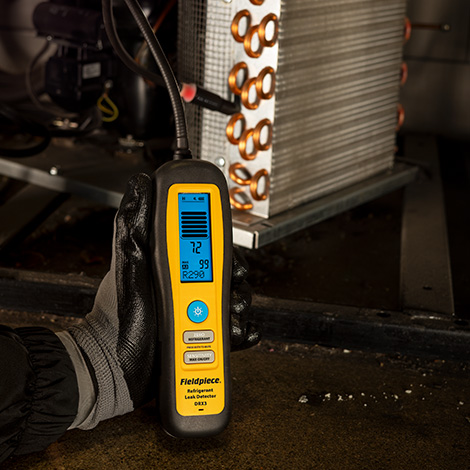
One of the most common issues that can compromise an HVAC system’s performance is refrigerant leaks. These leaks can lead to reduced cooling capacity, increased energy costs, and even environmental damage. That’s where a leak detector comes in. But what exactly is a leak detector, and how does it work? Let’s dive into the details.
A leak detector is a specialized tool designed to identify and locate refrigerant leaks in HVACR systems. These devices are crucial for HVACR technicians who need to ensure that refrigeration and air conditioning systems are tight and functioning efficiently and safely. Leak detectors help pinpoint leaks in refrigerant lines, coils, and other system components, allowing for quick repairs and minimal downtime.
Leak detectors come in various types, each using different methods to detect refrigerant leaks. Understanding these types can help technicians choose the right tool for the job.
There are several types of leak detectors available on the market, each with unique advantages. Here are the most common ones:
Electronic Leak Detectors
Electronic leak detectors are among the most popular tools used by HVAC professionals. These devices use sensors to detect the presence of refrigerant in the air. Some of the most popular models, like those manufactured by Fieldpiece, are equipped with heated diode or infrared sensors that provide accurate and reliable leak detection. Contrary to common misconception, both leak detector types below are compatible with A2L refrigerants, unless otherwise stated by the manufacturer.
Ultrasonic Leak Detectors
Ultrasonic detectors work by picking up high-frequency sounds produced by escaping refrigerant. These devices can detect leaks without directly coming into contact with the refrigerant, making them useful in hard-to-reach areas. However, they require a quiet environment for accurate detection.
Bubble Solution Leak Detectors
A more traditional method, bubble solution detectors, involves applying a soap-like solution to suspected leak points. If a leak is present, bubbles will form at the site of the escaping refrigerant. While this method is inexpensive and simple, it is not as quick or effective for detecting very small leaks.
Fluorescent Dye Leak Detectors
This method involves injecting a special fluorescent dye into the HVAC system. If there is a leak, the dye escapes and becomes visible under UV light. This technique is particularly useful for detecting leaks that are difficult to pinpoint with other methods, and most effective in detecting liquid or oil leaks.
Detecting and repairing refrigerant leaks is essential for energy efficiency, system longevity, environmental protection, and regulatory compliance. Leaks frequently lead to oil loss and a decrease in oil velocity, which in turn decreases system efficiency and increases energy costs and system wear. Early detection can prevent costly damage, while minimizing refrigerant emissions helps protect the environment. Additionally, compliance with regulations ensures responsible handling and reduces harmful impacts.
Selecting the right leak detector depends on various factors, including the type of refrigerant being used, the environment in which the tool will be used, and the sensitivity required. It is important to ensure that the leak detector is compatible with the target system’s refrigerant type as well, as detection capability and refrigerant compatibility will range across detection types and manufacturers. For example, Fieldpiece offers the DR58 Heated Diode and DR82 Infrared Leak Detectors, which are both compatible with A2L systems. These tools are designed with HVAC professionals in mind, ensuring reliable performance in the field.
When choosing a leak detector, there are several details to consider. Some leak detectors and leak detector settings are more sensitive than others, sensing leaks as small as 0.1 ounces per year, providing exceptional precision. Lifespan is also key, as long-lasting sensors reduce maintenance costs and ensure consistent performance. Also, look for rugged, field-ready designs and user-friendly interfaces, ergonomic designs, and features like automatic calibration that make leak detection more efficient.
To maximize the effectiveness of a leak detector, HVAC professionals should follow key best practices: conduct regular inspections to prevent system failures, confirm refrigerant compatibility according to manufacturer specifications, use the appropriate detector for accurate results, adhere to manufacturer guidelines for optimal performance, confirm leaks with a secondary method before repairs, and document findings for compliance and maintenance planning.
A leak detector is an essential tool for HVAC technicians, helping to ensure system efficiency, compliance, and environmental responsibility. Whether using electronic, ultrasonic, bubble solution, or fluorescent dye detectors, professionals rely on these tools to keep HVAC systems running smoothly. Fieldpiece offers some of the most rugged and reliable leak detectors in the industry, providing HVAC professionals with the confidence they need to perform their jobs effectively. Contact us today!